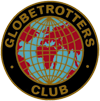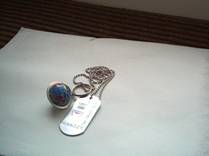We are sorry to say that Mac is not very well, but he is still
e-mailing strong and recently sent the Beetle a collection of Mac
reminiscences about some of his travels in 1992. Here we have
thoughts and experiences on Malaysia, India, Komodo Dragons and
Singapore.
Kula Lumpur, Malaysia: Malaysian children are singing in the church
across the street from my four star, oops, excuse me, I mean four
dollar hotel. It is sweltering hot and they are singing:
“Dashing through the snow in a one horse open shay.”
When I stepped outside my Hotel Shelly in Bombay one night (it is
along the water front) I heard on a microphone “Humpty Dumpty.
Number eight.” They were playing Bingo and calling number in
English manner, I guess, outside the pier of a membership
recreation club. An Indian gentleman came up to me in a
chilled beer bar and complained to me that his son worked for
American Express and they were taking advantage of him and having
him work more than eight hours a day. I told him I would
speak to them about that. Ha! I later saw Indians
picketing American Express for unfair labour practices. The
other side of the coin is, according to the Americans that the
Indians do not work as hard as the Americans and that they are used
to goofing off in Indian firms and expect to do the same in
American firms. I am trying to stay neutral. I can’t solve
all the worlds problems!
25 Nov 1991, Singapore: a cable car with wonderful views of
Singapore takes you to Sentosa Island. The wax museum (I like
wax museums, I learn my history there) shows the founding of
Singapore and about the War years and is well worth the $1.80 US it
costs. It is called Pioneers of Singapore/Surrender
Chambers. It always intrigues me, the foreigners living in
Singapore were dancing the night away in formal clothes at the
Raffles Hotel and then in a few hours, they were prisoners of the
Japanese. They had not expected the Japanese to attack down
the Malaysian peninsula but rather from the sea and certainly not
that fast if they did.
I just found out that if in Malaysia I had told them I was a Senior
citizen I could have travelled at half price on the train.
The Singapore Senior Citizen rate at their zoo, however, is
for Singaporeans only. I tried to look Singaporean, but
strangely, it didn’t work. They charge $7 U.S. I am
used to zoos being free but it is a good zoo.
Komodo dragons: the largest is about the size of a crocodile and
can eat a horse. They thought they were extinct and then they
found some on an Indonesian island, Komodo, hence their name.
Left over from past ages. I also saw Meerkats which are
like mongooses and they all got to see me.
Sign in subway in Singapore: No Durians allowed. Durian is a
fruit that is delicious tasting but has a terrible smell to it.
Many hotels and places will not allow you to bring in Durian
(they smell like farts) or as a British Colonial descried Durian
“Like eating a garlic custard while standing over a London sewer.”
I gave some stuff to Catholic Church in Kula Lumpur and the priest
and his students took me out to eat Durian. One girl said her
grandmother was addicted to it. Announcements on subway in
Singapore (and they have a beautiful one) were in four different
languages (all saying No Durian I guess).
An Iranian seaman sat next to me on bus from Singapore to Kula
Lumpur, Malaysia. He was eating almonds he had brought from
Iran. He said he had been in twenty countries, but not
the United States, as they would not let him in. He said that
the Revolution was bad, everyone is unemployed. There had
been so many Iranians at Ueno train station in Tokyo, Japan, each
morning when I was there. They would congregate there hoping
to get a day job from Japanese looking for cheap labour for the
day. It was odd. I am American and they were Iranians,
but they approached me to go site seeing with as if we were old
friends. He was a marine engineer (the guy on the bus). Oddly
enough, I met a marine engineer (three different ones) on three
different tour buses in different places. You think of seamen
spending their time in bars but all three I met were avid
sightseers.
While waiting for a bus in Singapore, I met an American school
teacher that joined an International Pen Pal Club just to have
contacts while travelling. He was amazed to find the pen pal
he had in Indonesia lived in a beautiful eight room house that had
a waterfall in the house. At pen pal places he says he
usually pays a nominal amount as he stays for long periods.
He paid $85 a month at one place on East Coast of Malaysia.
It was a place he had fallen in love with. Name is
something like Khoutan. One of the pen pals he visited was in
Brunei. He had never heard of it before (not all school
teachers are smart!) It is oil rich. He says that some
wealthy Brunei will charter a whole public bus just for himself and
the people that were going to take that public bus are just out of
luck with no advance notice. Today I guess it would be
internet pals.
If you would like to contact Mac, he is happy to answer e-mails: macsan400@yahoo.com
Country Statistics
|
Rank
|
Country Name
|
Internet Users as
% of Total Population
|
|
1
|
United States
|
53.23%
|
|
2
|
Norway
|
52.40%
|
|
3
|
Iceland
|
51.82%
|
|
4
|
Sweden
|
50.70%
|
|
5
|
Finland
|
43.86%
|
|
6
|
Denmark
|
42.97%
|
|
7
|
Netherlands
|
42.55%
|
|
8
|
Canada
|
42.03%
|
|
9
|
Singapore
|
40.46%
|
|
10
|
Australia
|
40.14%
|
Source:

 In some cache’s you may be lucky and come across a
“Travel bug”, these are small metal dog tag beetles with a number
on. If you decide to remove this from the cache you must put it in
the book. Once you get home look up the Travel bug online and see
what its mission is, some want to reach a particular destination,
others just want to visit as many places as possible. Your mission
once you have discovered what the bug wants to do is to help it on
its way by planting it in another cache, which hopefully helps it
get nearer to its goal.
In some cache’s you may be lucky and come across a
“Travel bug”, these are small metal dog tag beetles with a number
on. If you decide to remove this from the cache you must put it in
the book. Once you get home look up the Travel bug online and see
what its mission is, some want to reach a particular destination,
others just want to visit as many places as possible. Your mission
once you have discovered what the bug wants to do is to help it on
its way by planting it in another cache, which hopefully helps it
get nearer to its goal.